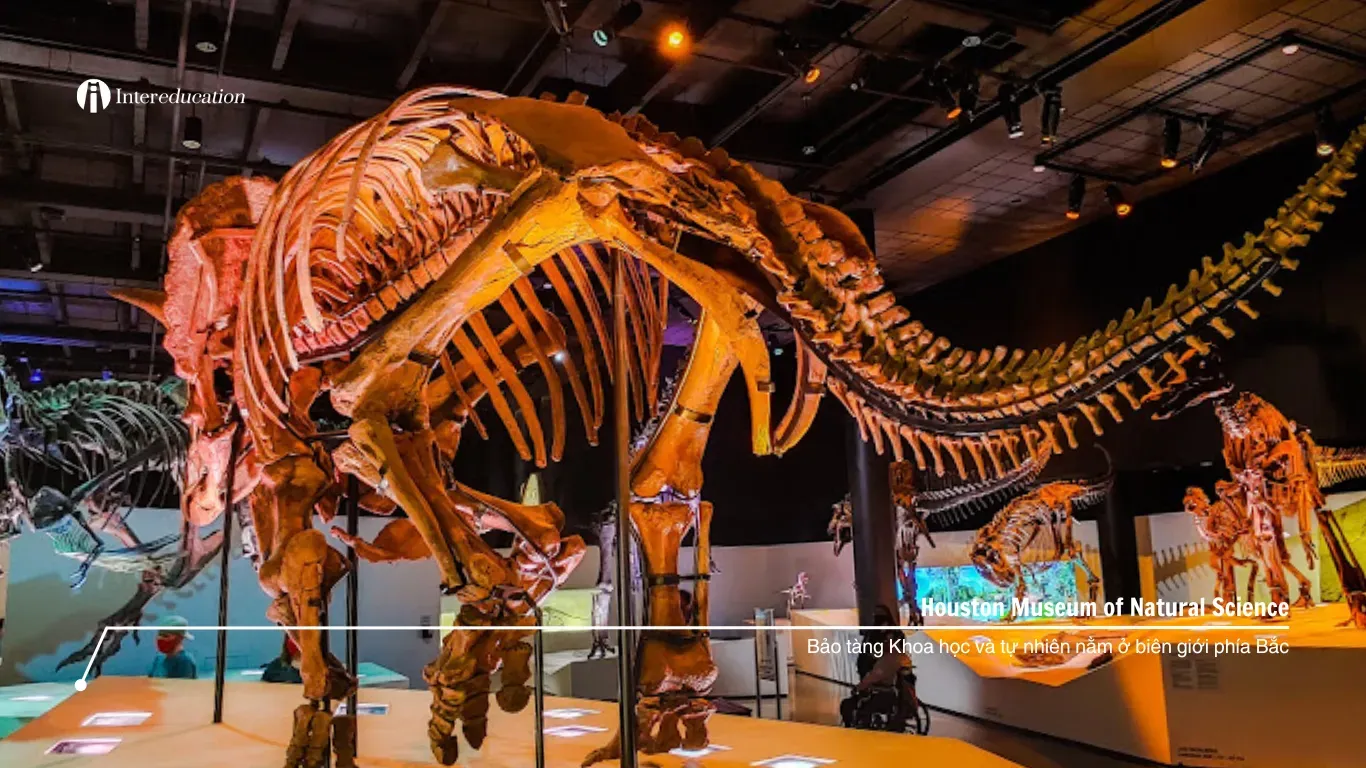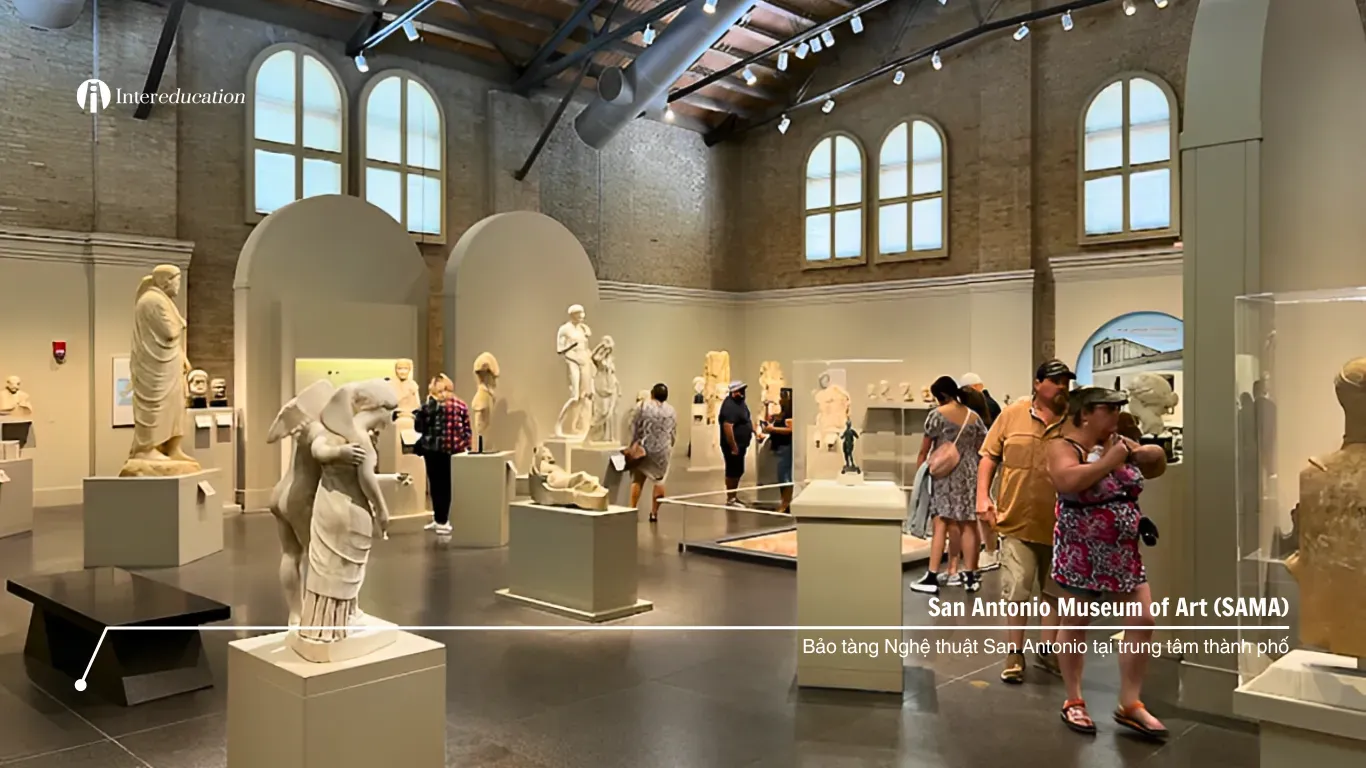Texas, with its vast expanse and diverse biology, is an invaluable treasure for those who love discovering natural history. The natural history museums in Texas are not merely exhibition spaces but also centers for education and scientific research, helping us gain a deeper understanding of the world around us. Are you ready for an adventurous exploration?
Prominent Natural History Museums in Texas
Texas boasts numerous renowned natural history museums, each with its unique charm, from gigantic dinosaur skeletons to rare mineral collections. Here is a list of museums you shouldn’t miss:
Houston Museum of Natural Science: Discover the World of Science
The Houston Museum of Natural Science (HMNS) is one of the largest natural science museums in North America, attracting over 2 million visitors annually. HMNS serves not only as an exhibition space but also as an interactive center where you can directly engage with and explore fascinating scientific phenomena.
The museum is divided into several exhibition areas, each focusing on a specific theme:
- Hall of Paleontology: A display area featuring dinosaur fossils and other prehistoric animals. Here, you can marvel at the enormous Tyrannosaurus Rex skeleton and learn about the evolution of different species.
- Cockrell Butterfly Center: An indoor tropical garden where you can observe hundreds of colorful butterflies flying freely.
- Wortham IMAX Theatre: A modern IMAX cinema presenting science and nature documentaries with vibrant visuals and sound.
- Burke Baker Planetarium: One of the leading planetariums worldwide, taking you on a journey through the vast universe.
- Hall of Gems and Minerals: An exhibition of gemstone and rare mineral collections from around the world.

Texas Memorial Museum: Discover the Natural History of Texas
Located on the University of Texas campus in Austin, the Texas Memorial Museum is a natural history museum centering on Texas’s ecosystems and natural history.
The museum has three main exhibition floors:
- First Floor: Features the geology and fossils of Texas, including rock, mineral, and dinosaur fossil samples.
- Second Floor: Explores the biodiversity of Texas, from mammals to birds and insects.
- Third Floor: Displays artifacts related to the history and culture of the Native Americans in Texas.
Fort Worth Museum of Science and History: Learn Through Experience
The Fort Worth Museum of Science and History is an interactive science and natural history museum where you can learn through hands-on activities and engaging experiences.
The museum offers various exhibition areas, including:
- DinoLabs: A display area of dinosaur fossils and archaeological exploration activities.
- Energy Blast: Learn about energy resources and how we utilize them.
- Noble Planetarium: A planetarium offering shows about the universe and planets.
- Children’s Museum: A section dedicated to children, featuring creative and educational fun activities.
Planning Your Visit to Texas Natural History Museums
To have a fulfilling visit to Texas’s natural history museums, you should plan ahead. Here are some tips:
- Choose the right museum: Research the different museums and select one that matches your interests and preferences.
- Check opening hours and ticket prices: Visit the museum’s website for details on opening hours, ticket prices, and special programs.
- Schedule your visit: Decide which exhibition areas you want to see and allocate enough time for each.
- Wear comfortable shoes: You’ll be doing a lot of walking, so choose comfortable footwear.
- Bring water and snacks: Some museums may not allow outside food and drink, so check beforehand.
- Join guided tours: Guided tours will provide deeper insights into the exhibits and museum history.
- Interact with the exhibits: Feel free to touch the artifacts (if permitted) and participate in interactive activities.
- Ask questions: If you have any inquiries, feel free to ask the museum staff.
- Purchase souvenirs: Buy a keepsake to commemorate your museum visit.
Exploring Texas Natural History: An Educational and Entertaining Experience
Visiting natural history museums in Texas is not just an entertaining activity but also an excellent educational experience. You’ll explore the wonders of the natural world, learn about Earth’s history, and the evolution of various species.

Take the time to visit Texas’s natural history museums and uncover the fascinating aspects they offer. You’re sure to have a memorable and enriching trip!
Conclusion
With its geological, biological, and historical diversity, Texas is the ideal destination for those looking to explore the natural world. The natural history museums in Texas are not only showcases of artifacts but also centers of education, scientific research, and heritage conservation. Plan your visit today and discover the marvels Texas has to offer!